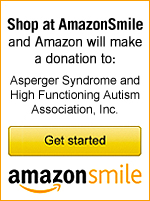
Abbreviations
are often used for medical and educational terms. This
can be very confusing to parents at the beginning of
a new process where the words and terms are still unfamiliar.
We have listed many of them below to help you learn
more about Autism Spectrum Disorders.
- AAC – Augmentative and Alternative Communication
- ADA – American with Disabilities Act
- ADD – Attention Deficit Disorder
- ADHD – Attention Deficit Hyperactivity Disorder
- AE – Age Equivalent
- AIT – Auditory Integration Therapy
- AS – Asperger’s Syndrome
- ASD – Autistic Spectrum Disorder
- ASL – American Sign Language
- ASPIE -A person with Asperger’s Syndrome
- BD/ED -Behavior Disordered / Emotionally Disturbed
- BOCES – Board of Cooperative Educational Services
- BOE – Board of Education
- BP – Bi-Polar (formerly manic-depressive)
- CAPD – Central Auditory Processing Disorder
- CNS – Central Nervous System
- CPSE – Committee on Preschool Special Education
- CSE – Committee on Special Education
- DD – Developmental Disability
- DSM-IV – Diagnostic Statistical Manual (edition
IV) - DX – Diagnosis
- ED – Emotionally Disturbance
- FAPE – Free and Appropriate Public Education
- FERPA – Family Educational Rights and Privacy Act
- HFA – High Functioning Autism
- IDEA – Individuals with Disabilities Act
- IEP – Individualized Education Program
- IH – Impartial Hearing
- IQ – Intelligence Quotient
- LD – Learning Disability (Learning Disabled)
- LRE – Least Restrictive Environment
- MR -Mentally Retarded (IQ less than 70)
- MRI -Magnetic Resonance Imaging
- NOS -Not Otherwise Specified, usually seen as PDD-NOS
- NT -Neurotypical
- OCD -Obsessive-Compulsive Disorder
- ODD -Oppositional-Defiant Disorder
- OHI – Other Health Impaired
- OT -Occupational Therapy
- PDD -Pervasive Developmental Disorder
- PET -Positron Emission Tomography
- PT – Physical Therapy
- SAD -Seasonal Affective Disorder
- SED – State Education Department
- SEIT – Special Education Itinerant Teacher Services
- SETRC – Special Education Training Resource Centers
- SI – Speech Impaired
- TBI – Traumatic Brain Injury
- TDD – Telecommunication Devices for the Deaf
- TEACCH -Treatment & Education of Autistic &
Related Communication Disorders - TOM -Theory of Mind
- TS -Tourette’s Syndrome
- VESID – Office of Vocational & Educational Services
for Individuals with Disabilities - VI – Visually Impaired
- VR – Vocational Rehabilitation
- WISC -Wechsler Intelligence Scale for Children
- Yo -Year Old
As
a service to our users, we provide the following list
of commonly-used internet abbreviations:
ROFL
-Rolling On Floor Laughing
FWIW -For What It’s Worth
BTW -By The Way
GSOH -Good Sense Of Humour
OSOSBSU -Oops, straying off subject, better shut up
LOL -Laugh Out Loud
AFAIK -As Far As I Know
IMHO -In My Humble Opinion
IMO -In My Opinion
IOW -In Other Words
SPAM – Single Point Addressed Multiply
🙂 happy
🙁 sad
:-> very happy
:-< terribly sad
:-0 laughing
:’-( crying
😛 sticking tongue out
:-O yawning
B-) I wear glasses
:-* kiss
?:-o surprise
{} hugs
😉 wink
😡 say nothing
£-) greedy
Important!
If you are going to use the Internet, you can save yourself
a lot of time and trouble by learning the rules of “Netiquette,”
such as not using all-capital letters unless you really
mean to look like you’re shouting, and always lurking
for a while to learn the rules (and the ropes) before
making yourself known. There are many guides to Netiquette
on the World Wide Web, including this
one. Or do a Yahoo search for Netiquette to find
others.
